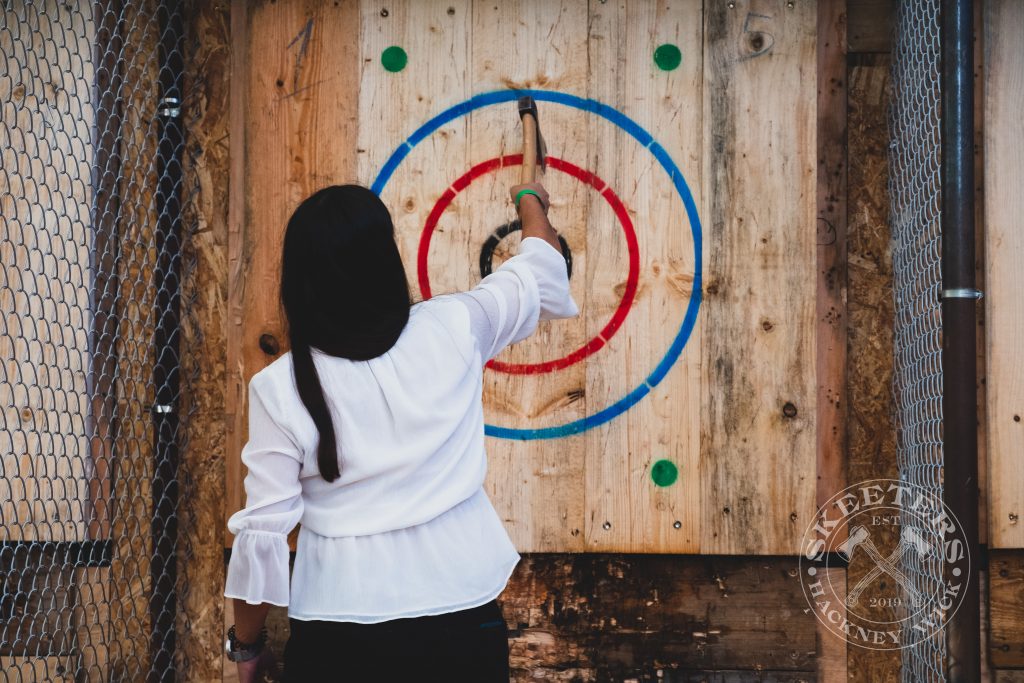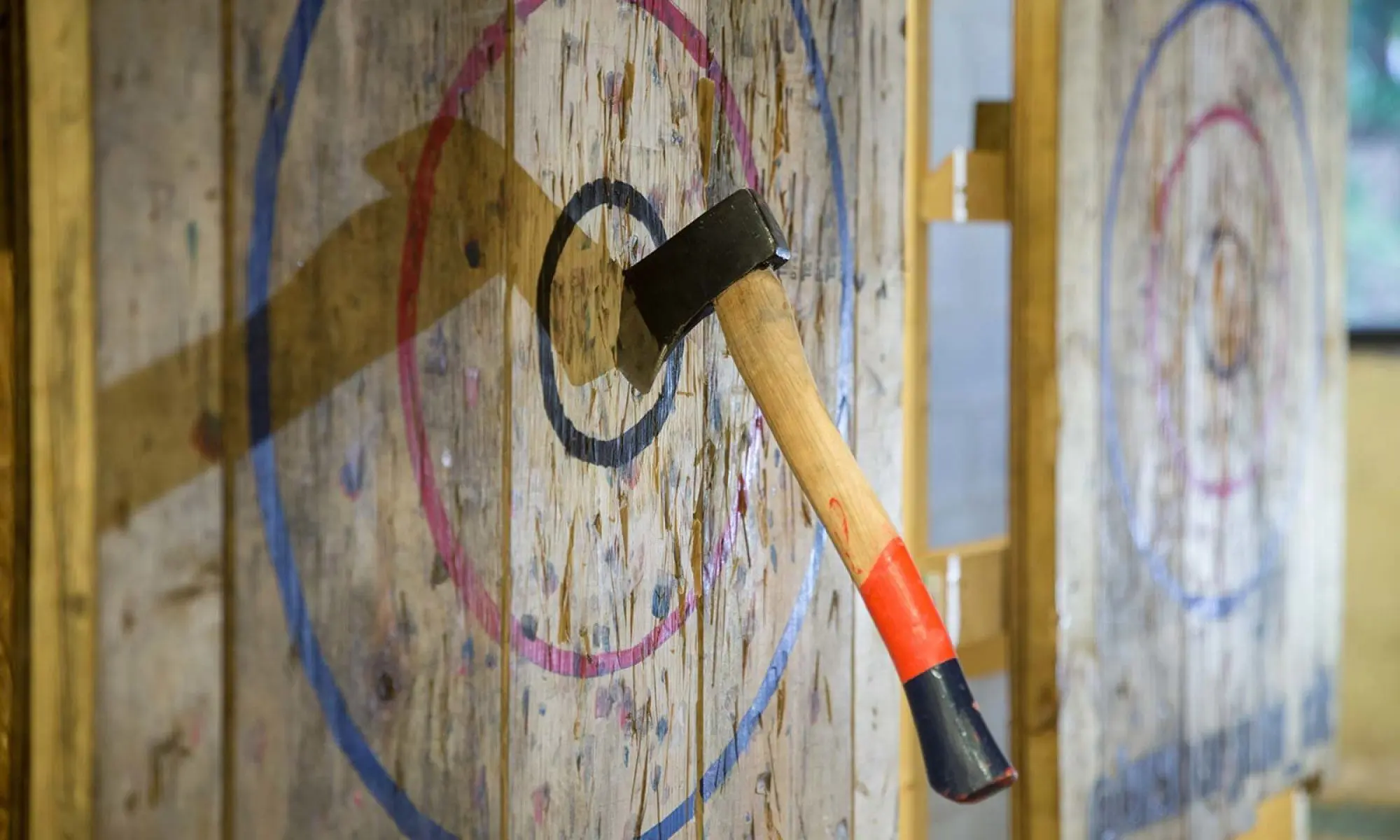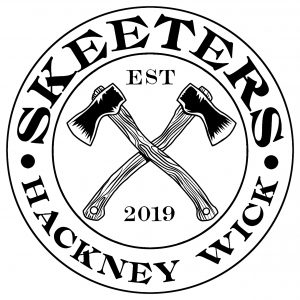Popularised by North American lumberjacks, axe throwing has come a long way from the frontiers where hardened professionals would compete at throwing their axes into huge tree stumps. These days an axe throwing target is much like those seen in archery or darts, with different areas of the target scoring different points.
For obvious reasons, targets are made from wood. No shiny suits of armour or massive boulders to ping axes off of I’m afraid. We practice axe throwing as regulated by the International Axe Throwing Federation (IATF) and all our targets adhere to these standards.
In the IATF, all targets measure 35.5” x 27.5”, with the largest blue ring 27” in diameter, the red three point ring measuring 17” and the bullseye 7”. Blue is worth one point, Red three and bullseye worth 5. A final scoring zone called the clutch is located above the ring on the left and right, and can be nominated on the 5th and final throw of each round and is worth 7 points. On our targets, you’ll see two clutches at the bottom as well. Those don’t count for anything in competition, but they mean we can spin our mid board targets to get more use out of the wood.

The wood used for an axe target is very important. If the wood is too hard, it will be too difficult to get the axe to stick. Axes are of course designed to chop wood, so if a target is made from a wood that is too soft then the target will be reduced to chips and splinters.
But it’s not just the hardness of the wood that’s important. Some varieties of wood have properties that increase the longevity and functionality of the target. For example, some woods like Poplar are self healing. This means that after being hit by an axe, the board reshapes to fill the hole, moving back into its original shape after the axe is taken out.
Cottonwood on the other hand readily absorbs moisture. Because water has naturally shock absorbent properties, this acts as a sort of damper to the force of an axe making a target stay strong for longer. This also acts as a natural soundproofing, which means less thumping distractions and better accuracy. Nice!
Pine is another common choice as it is readily available, easy to work with and very strong. The only downside is that pine wood can be less forgiving than some other, softer woods making it more likely to split or splinter. In our venue, all our targets are braced and supported with additional boards to ensure maximum durability and minimum wastage.
At Skeeters, we have built London’s best axe throwing hall. Bespoke from floor to ceiling, our venue has been customised to offer a thrilling space to embrace the wonderful world of axe throwing. We are calling all axe throwing legends from Vauxhall to Ruislip to come and test their talents in a relaxed and friendly atmosphere.
At Skeeters we have trained professionals on hand to make sure that no matter if you are a hardened viking or a humble beginner, you can have fun axe throwing and get some consistent sticks on that target!
For more axe throwing news click here
Follow us on instagram to stay updated!



No responses yet